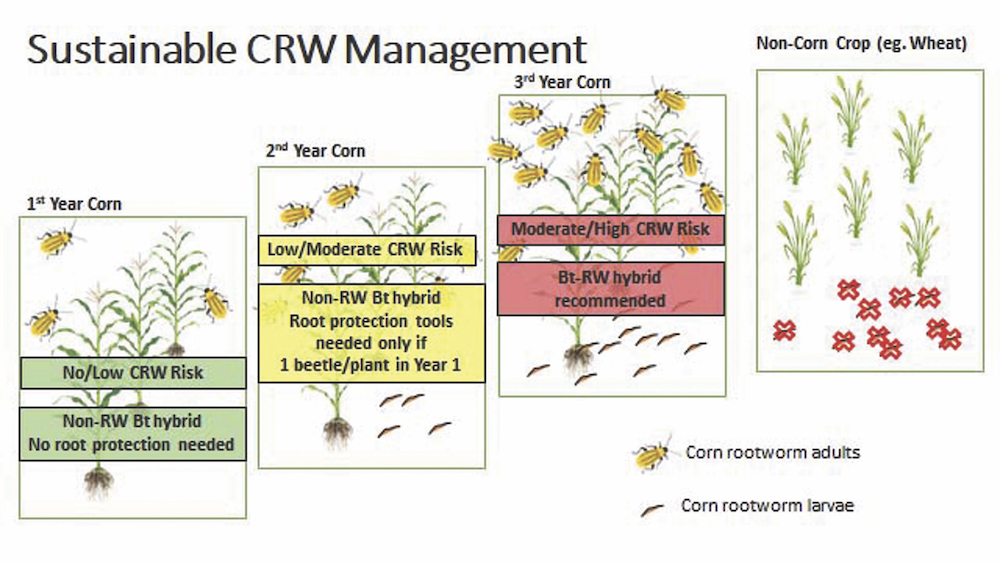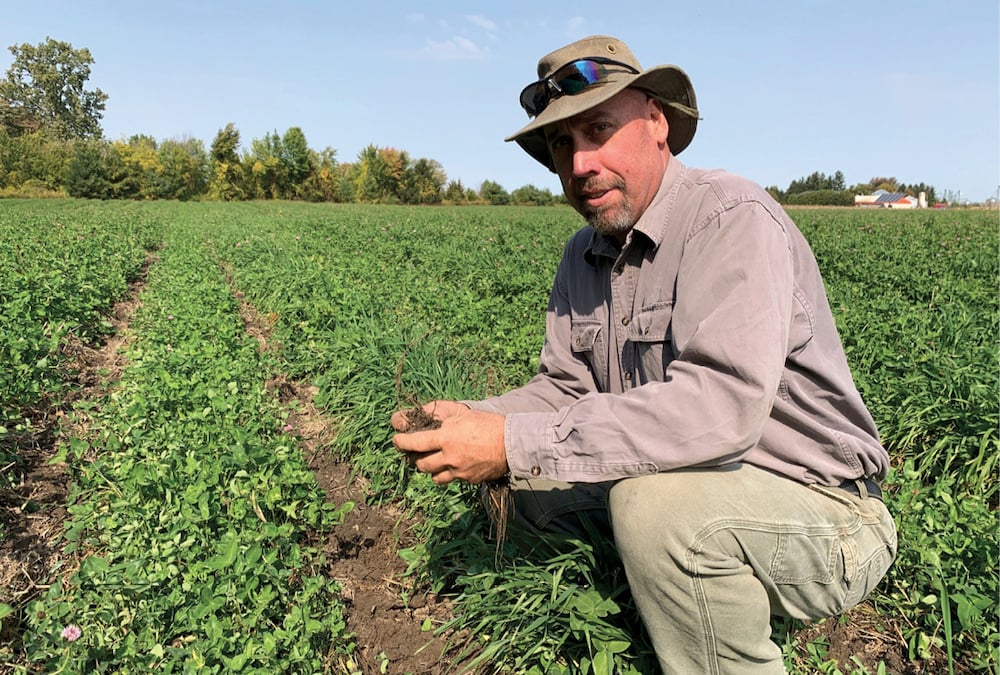By the numbers – corn rootworm in 2023

Concerns about corn rootworm have increased in the past two years as numbers continue to rise across the province, particularly in areas where corn is a feed source for livestock.
Read Also

Making row crops work with perennial cover crops
Laurent “Woody” Van Arkel likes to push the boundaries of conventional thinking and strives to understand more about soil and…
Two years ago, Tracey Baute, field crops entomologist with the Ontario agriculture department, noted that resistance to Bt Cry proteins had become an issue, where three out of four targeting corn rootworm were closely related.
Cry3Bb1, mCry3A and eCry3.1Ab were identified as “cross-resistant”, meaning a population of corn rootworms resistant to one will exhibit the same level of resistance to the other proteins.
Why it matters: Corn rootworm resistance is an increasing problem where corn is grown continuously.
That meant the remaining protein –Cry34/35, while documented as resistant, was not cross-resistant.
Baute maintained it was only a matter of time before the fourth Cry3 protein would also develop cross-resistance, drastically reducing the efficacy of those hybrids with corn rootworm traits.
A year-end 2023 report from the Ontario Corn Rootworm Trap Network shows some of the numbers are not encouraging. In all, 59 trap sites were monitored, and corn rootworm adult activity peaked during different times in August.
The good news is that populations were 60 per cent lower than in 2022. However, 12 of the trap sites reached or eclipsed trap thresholds of two beetles per trap per day. All were in continuous corn, with the exception of one site that was surrounded by fields of continuous corn.
“These sites should be rotated out of corn in 2024 to knock back resistant populations and help to maintain what durability we have left in Bt-RW hybrids,” wrote Baute in the Nov. 9 Field Crops News entry.
In 2019, Huron, Perth and Bruce counties showed the highest corn rootworm resistance. Two years later, there was unexpected damage detected in Middlesex and then Chatham-Kent and some parts of Central Ontario.
From the results of the 2023 trap network, Chatham-Kent and Huron were rated as “high” (2 to 4.9 beetles per trap per day), Middlesex, Oxford and Waterloo were “very high” (5 to 9.9 beetles), and Perth and Wellington fell into the “extreme” category (more than 10 beetles per trap per day).
Similar results
Agronomists and advisors with Bayer Crop Science saw many of the same indicators with corn rootworm. They had a similar number of reported product inquiries for rootworm damage in 2023 as they had in the past few years. But environmental conditions, particularly the heavy rains that marked late June and early July, were thought to be the primary cause of the 60 per cent decrease in number of adults found in traps.
“Last year, we had a favourable winter with dry soils,” says Adam Pfeffer, row crop market development manager for Bayer.
“If we go through a prolonged period of saturated soil conditions this winter, survival may be reduced, but we won’t know until the spring,”
The good news from Pfeffer is that some growers are focusing on a rotational non-host year in fields with a history of multiple corn-on-corn years. Scouting and more education on the benefits of a rotational non-host year are the two key take-home messages for growers.
“Economics have pushed continuous corn in some regions, either to meet demands of their livestock operation or for the positive economic advantage corn brings for grain and oilseed growers,” says Pfeffer.
“But these economic advantages can be reduced quickly if corn rootworm populations grow further and pressure the management tools available, which is why corn rootworm is called the ‘billion-dollar pest’.”
The introduction of Bayer’s SmartStax PRO hybrid line includes the use of RNAi (ribonucleic acid interference) technology that improves performance and durability against corn rootworm. But RNAi is not the lone solution to combat CRW resistance, nor should it be regarded as such. Bayer advocates the pairing of RNAi traits with current Bt/Cry1 rootworm traits already on the market, ensuring reliability and robustness.
“As we talk about these new products, they are one tool in corn rootworm management and we must continue to ensure best management practices, like rotation, for continued success,” says Pfeffer.
“Even with new traits on the market, the key to CRW is managing and lengthening rotations. We do see improved efficacy with three modes of action and we expect longer durability. Rotation to a non-host crop will always be a powerful tool for corn rootworm management, along with scouting and preparing proactively for pest challenges.”
In addition to SmartStax PRO, Bayer is also launching VT4PRO, also with RNAi technology, starting in 2025.
Source: Farmtario.com

